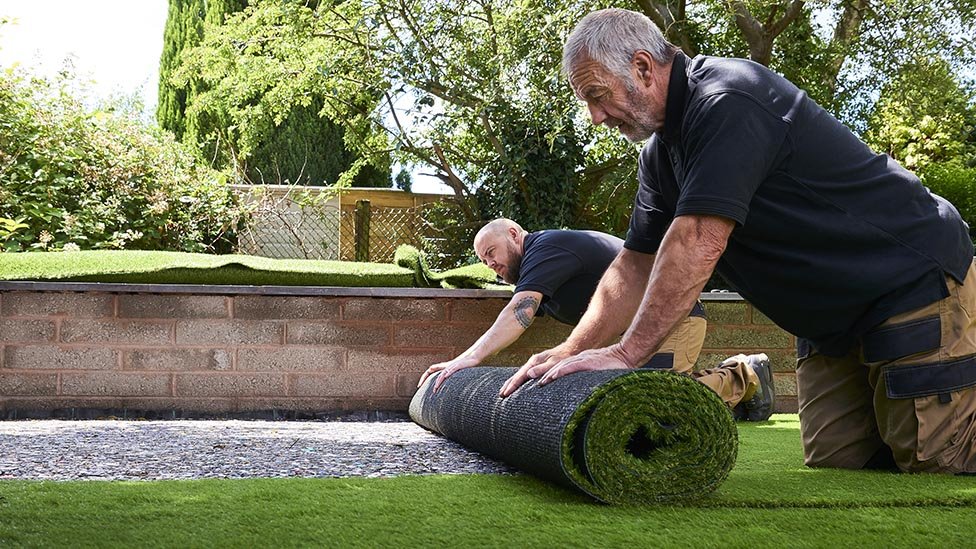Report Overview
By 2025, the artificial turf market is projected to reach a value of USD 3.8 billion and expand at a compound annual growth rate (CAGR) of 5.4%. The growing demand for flooring products that are easy to maintain, durable, and reasonably priced for use in outdoor applications are the main factors influencing the need for artificial turf.
Artificial turf on playgrounds and lawns saves millions of gallons of water annually. These products also get rid of the harmful fertilisers and chemicals that are needed to cultivate natural grass. Also, they are easy to fix and replace, which significantly reduces the cost of upkeep for users.
The growth of the construction sector in the US is a significant factor supporting the business. Artificial turf is highly necessary for projects building residences, sports arenas, stadiums, and commercial gardens. As a result of early adoption and technological breakthroughs, artificial turf sales have expanded across the country.
Modern artificial grass’ antibacterial properties help to prevent the spread of germs and pathogens. Also, the product is suitable for both children and pets because, unlike actual grass, it is not exposed to potentially harmful toxins.
As a result, there will probably be a rise in demand for the products at parks and playgrounds over the predicted period of time.
Schools and sports teams are projected to be the product’s key clients because of its resistance to wear and tear. The market is expected to increase as a result of rising government spending on sports services and amenities as well as rising fitness levels in Asian countries.
The demand for artificial turf in public spaces for water-saving landscaping solutions is predicted to rise over the forecasted period. The Synthetic Turf Council represents the stakeholders involved in the design, use, testing, and consultation of artificial grass products. The sector will definitely expand thanks to these organisations’ promotional activities.
Artificial Turf Market Trends
The desire for artificial turf to replace natural grass is the main factor driving the industry. Artificial turf is easier to manage than grass because it doesn’t require as frequent cutting because it can’t grow. Also, a lot of people have grass allergies that can be avoided by installing artificial turf. In the United States in 2018, 19.2 million persons aged 18 and over received a diagnosis of hay fever or grass allergies, according to the Centres for Disease Control and Prevention.
Growing health consciousness has encouraged people to participate in sports. This has raised demand for sports grounds and stadiums with all the necessary amenities. It is anticipated that the spike in demand would further fuel market expansion. According to a FIFA survey, 265 million people worldwide participate in sports. In the US, 25% or so of the population participates in sports.
Material Insights
In terms of volume and revenue, polyethylene-based artificial grass held the biggest market share in 2018, and it is anticipated that this dominance will persist during the forecasted period. The products’ superior qualities, including as their robustness, softness, and durability, are what are making them more and more popular in end-user applications.
Artificial turf made of polypropylene earned a significant portion of the market in terms of consumption in 2018 thanks to its lower cost and longer lifespan. However, the product’s lack of durability, poor heat resistance, and roughness on the skin have hindered its growth in popular outdoor sports applications, which in turn is impeding the growth of the industry as a whole.
Artificial grass made of nylon is firm and holds its shape even in regions with high foot traffic and for use in intense athletic applications. These grasses don’t melt in hot weather and are heat-resistant. Its penetration in residential, commercial, and sporting uses has been constrained by their improbable resemblance to real grass and their high price.
It is also projected that advances in materials with long colour retention, wear resistance, and high melting points will accelerate the market expansion for artificial turf. The key element that producers take into account is the widespread use of artificial grass in outdoor activities; as a result, they are concentrating on advances in installation methods and infill materials.
Application Insights
Sports was the product’s largest application sector in terms of revenue in 2018 and is projected to expand at a CAGR of 5.2% over the forecast period. Young people are playing more outdoor sports around the world, which has increased the need for additional stadiums and sports facilities and supported industrial expansion.
The construction of sports fields and stadiums for popular outdoor sports like rugby and tennis in the area has contributed to the market’s expansion. Unfortunately, a number of football players have sustained ACL injuries on turf fields in recent years, which is restricting their scope of use in these applications.
Over the forecast period, the commercial segment is anticipated to experience the quickest CAGR of 5.8%. In addition to other public utility locations, hotels, amusement parks, and public gardens frequently use artificial turf for commercial applications. Globally expanding commercial construction is probably going to assist market expansion. The expansion of the artificial grass business is predicted to be accelerated by urban development in important geographic areas and an increase in the number of commercial playgrounds.
Durability, affordability, and ease of maintenance are qualities that have helped the product become more prevalent in residential applications. The main applications for artificial grass in residential settings are gardens, lawns, backyards, and terraces. The demand for artificial turf in solitary homes has been driven by improving living standards and levels of disposable money.
Regional Insights
In terms of revenue, Europe dominated the market internationally in 2018 and is predicted to expand significantly over the forecasted period. The region’s artificial turf market is anticipated to continue expanding due to factors including the abundance of sports fields, the transition from natural grass to synthetic grass, and the rising popularity of outdoor activities.
Due to the growing installation of grass on rugby fields, the market for artificial turf in France is predicted to develop at a CAGR of 4.5% in terms of revenue over the forecasted period. Additionally, it is projected that the product’s increasing use in both residential and commercial building will sustain product demand.
In terms of volume, Asia Pacific is predicted to increase at a rate of 5.7% over the projection period due to rising constructions supported by rising investments from overseas multinationals. The main forces driving the usage of the product in commercial applications are the expanding tourist and hospitality sectors. Moreover, the market is projected to rise as a result of the expansion of commercial playground building and accelerated urbanisation.
Due to rising investments from domestic and foreign firms in Brazil, Argentina, Colombia, Chile, and Peru, the construction industry in Central and South America is anticipated to expand. Due to the expansion of commercial construction in the region and the impending FIFA World Cup in Qatar, the market for artificial grass in the Middle East and Africa is anticipated to rise.
Key Companies & Market Share Insights
Due to the existence of international manufacturers and a sizable number of domestic companies who provide application-specific products, the global artificial turf industry is relatively competitive. In investing in R&D, the players mostly concentrate on enhancing the product’s longevity and durability to withstand in the competitive climate.
Production of artificial turfs with high quality and FIFA, FIH, ITF, etc. approval is one of the marketing methods used by industry participants. Furthermore, in order to enter the industry, significant players concentrate on business tactics such contracts and joint ventures. Among the top companies vying for market share are Tarkett S.A., CCGrass, TenCate Grass, and SYNLawn.
Global Artificial Turf Market Segmentation
This research provides an analysis of the industry trends in each of the sub-segments from 2014 to 2025 and estimates revenue growth at the global, regional, and national levels. Flair Insights has divided the worldwide artificial turf market report into segments based on material, application, and region for the purposes of this study:
- Material Outlook (Volume, Million Sq. Meters; Revenue, USD Million, 2014 – 2025)
- Polyethylene
- Polypropylene
- Nylon
- Application Outlook (Volume, Million Sq. Meters; Revenue, USD Million, 2014 – 2025)
- Residential
- Commercial
- Sports
- Regional Outlook (Volume, Million Sq. Meters; Revenue, USD Million, 2014 – 2025)
- North America
- The U.S.
- Canada
- Mexico
- Europe
- The U.K.
- Germany
- Spain
- Italy
- France
- Russia
- Asia Pacific
- China
- Japan
- India
- South Korea
- Singapore
- Australia
- Central & South America (CSA)
- Brazil
- Argentina
- Middle East & Africa (MEA)
- Saudi Arabia
- UAE
- North America



